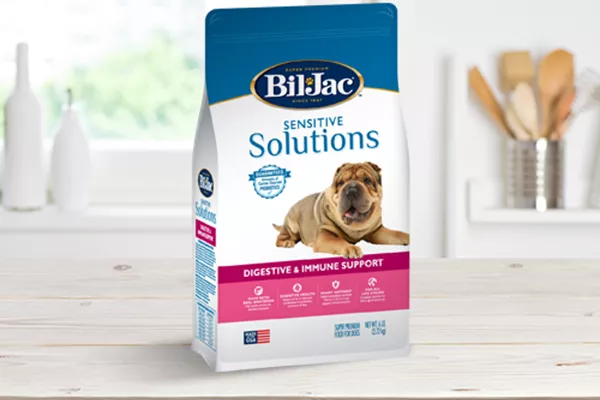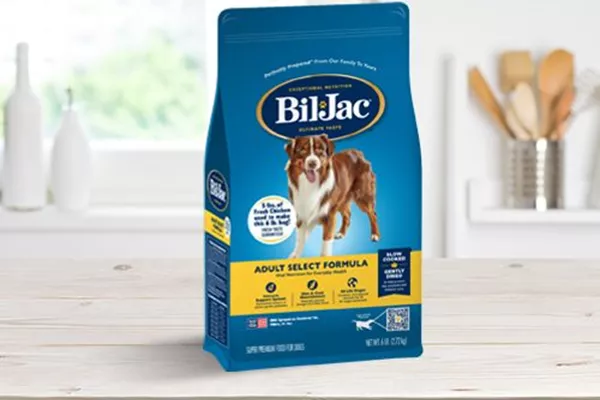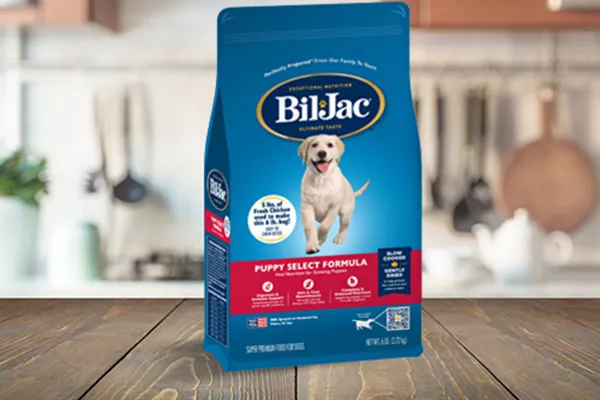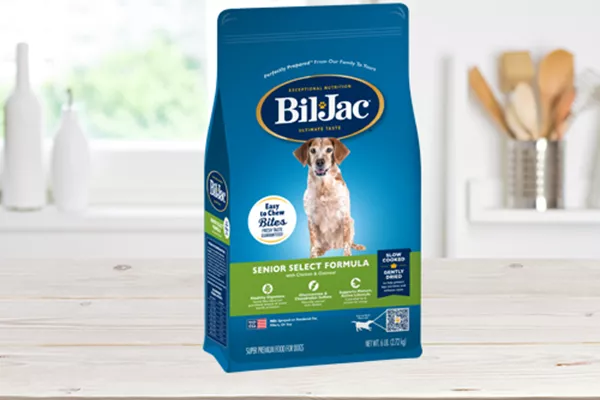Trying to figure out the right feeding schedule for your furry family member? Keep reading to learn how to establish a good mealtime routine for you and your best friend.
How Many Times a Day Should I Feed My Dog?
As you may expect, some dogs need to eat more often than others. The number of times you should feed your dog each day can vary depending on their age.
How often should I feed a puppy?
Puppies are little balls of energy, and they need frequent feedings as they grow. Puppies typically start eating solid food around 8 weeks old, and they need considerably more food to keep up with their rapid development.
While puppies do need more food, it’s important not to leave out food all day and let them eat whenever they want. Allowing them to eat whenever they want can make them overweight, even if their tiny tummies can only hold so much food. Instead, it’s best to provide multiple smaller meals depending on their age.
- 6 weeks to 6 months: Three meals a day.
- 6-12 months (18 months for large breed puppies): Two meals a day.
It’s also important to remember that these are guidelines. While many pups will be happy with these feedings, every dog is different. High energy dogs may need more food to account for the extra calories they burn. Make sure to keep an eye on your puppy’s growth and energy levels so you can adjust their feeding schedule as necessary.
How often should I feed an adult dog?
In general, adult dogs should eat at least two meals a day. If you opt for two meals, try to keep them roughly 12 hours apart.
Splitting your dog’s meals into breakfast, lunch, and dinner is also a common option. The exact timing of these meals can depend on your schedule, but just make sure your dog is not waiting too long between meals.
How often should I feed a senior dog?
Senior dogs have different nutritional needs as they age, but the feeding frequency generally stays the same. Try to break up your dog’s food into two or three meals throughout the day to help them maintain a healthy weight and get the high-quality protein they deserve.
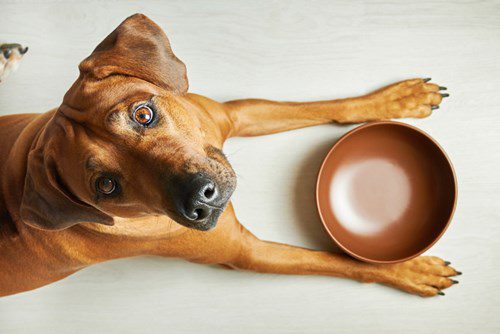
5 Tips for Establishing a Feeding Schedule for Your Dog
Once you know how many times your dog should eat each day, it’s time to create a routine. Here are a few ways that you can help your dog stick with a feeding schedule.
- Stay consistent. Dogs are creatures of habit, so it’s best to create a reliable routine for your best friend. Try to feed your dog around the same times each day. If you need to adjust those times, try to do so gradually.
- Keep your schedule in mind. Your daily schedule can play a direct role in when you can feed your dog. Work, chores, and other responsibilities can affect your dog’s feeding schedule, so try to find times where you can consistently be home for meals (or have someone who can feed them if you’re not available).
- Measure each meal. It’s important to make sure your dog doesn’t eat too much or too little. Use a measuring cup to make sure your dog has an appropriate amount of food for each meal. For the ideal portion size, refer to the feeding recommendations on your dog’s food label.
- Use treats in moderation. Too many treats can lead to your dog skipping meals. Make sure that treats make up no more than 10% of their diet and stick with snacks that are made to be both delicious and retain essential nutrients.
- Keep their water ready. Fresh, clean water is an important part of your furry friend’s diet. Check their water bowl throughout the day to make sure that water is available.
Signs You Might Need to Adjust Your Dog’s Feeding Schedule
While it’s good to have a set feeding routine, there are times where you may need to be flexible with your dog’s mealtimes. Keep an eye out for these signs that you need to adjust how much or how often you feed your dog.
- Weight changes. While the feeding recommendations for your dog’s food are a great start, they’re not always right for your best friend. Monitor your dog for either weight gain or loss and adjust their feeding amount as necessary.
- Energy levels. If your dog seems more lethargic or energetic than usual, they may need an adjustment to their meals. Consider adjusting their feeding amount or adding a new meal to help them get the right amount of food throughout the day.
Find the Right Feeding Schedule for Your Dog
It can take a bit of trial and error to figure out a good feeding schedule for your dog, but it’s worth the effort. Remember, every dog is different. Make sure to take some time to see what works for them and don’t be afraid to consult your veterinarian to see what they would recommend for your dog.
Want to learn more about how you can help your furry friend stay happy, healthy, and well fed? Sign up for the Best Friends Club for more educational articles, special tips, and members-only discounts on Bil-Jac treats and other products.

